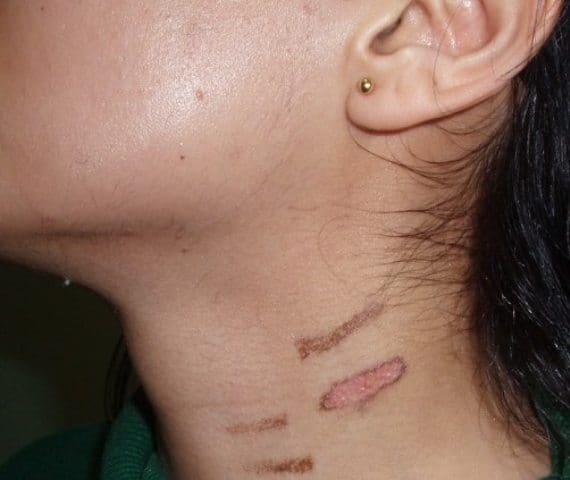Table Of Content

The laser beam is used to kill hair follicles, resulting in the loss of hair growth from those follicles. If you are planning to undergo laser hair removal, you should limit plucking, waxing, and electrolysis for 6 weeks before treatment. That's because the laser targets the hairs' roots, which are temporarily removed by waxing or plucking. This is primarily due to the fact that no human studies have proved the safety of laser hair treatments during pregnancy.
Common Misconceptions
A review of the relevant literature has been performed to address the issue of long-term IPL safety, focussing on DNA damage, oxidative stress induction and the impact of adverse events. Given the rigorous nature of IPL hair removal treatments, it’s natural to wonder about potential long-term health impacts. The process, which effectively halts future hair growth, might appear severe at first glance. However, IPL technology, in existence since 1996, has undergone significant advancements and thorough studies.
Question 1. Does Laser Hair Removal Increase the Risk of Cancer?
The procedure only affects the surface of the skin and does not reach reproductive organs. Laser hair removal has become a popular solution for achieving smooth, hair-free skin in Ottawa (and the rest of Canada).
Quick Links
People wishing to have laser hair removal treatment should always use a fully-qualified practitioner. As with other cosmetic hair removal methods, damaging hair follicles with a laser can create an infection risk. For most people, laser hair removal is a safe way to get rid of hair in unwanted places permanently or for long periods of time. A lot of misconceptions exist about what laser hair removal is and what it can and can’t do.
Will I need multiple treatments?
How you can look your best this summer - UCHealth Today
How you can look your best this summer.
Posted: Mon, 26 Jun 2017 07:00:00 GMT [source]
Each pulse of the laser takes a fraction of a second and can treat many hairs at the same time. The laser can treat an area approximately the size of a quarter every second. Small areas such as the upper lip can be treated in less than a minute, and large areas, such as the back or legs, may take up to an hour.
See our latest innovations in personal care
The area being treated will then be shaved, and a cooling gel may be applied to help protect the surrounding skin. Depending on the type of laser, a cooling device on the tip of the instrument or a cool gel might be used to protect your skin and lessen the risk of side effects. Wear sunscreen for the following month to help prevent temporary changes in the color of the treated skin.
Skin Sensitivity:
Afterwards, laser hair removal is permanent on most areas of the body. Today, more men than ever are seeking laser hair removal as a way to permanently eliminate unwanted hair. Watch this video to learn how laser hair removal can help treat issues like razor burn and ingrown hairs.
People should ask their dermatologist to test how a small patch of skin reacts to the treatment before having it done on a larger area of skin. Laser hair removal is popular with people wanting a solution to hair removal that is more permanent than some other methods. Using lasers to remove hair works by stopping the hair follicles from growing new hairs. The process of laser hair removal is typically not painful, but the skin may hurt or feel tender afterward. Side effects of laser hair removal can also include irritation, changes in skin color, crusting, and more.
Can laser hair removal cause skin cancer?

The development and use of lasers and light for medical and cosmetic procedures based on the principle of selective photothermolysis [1] has increased exponentially over the past two decades. Since the first commercial cutaneous carbon dioxide laser system became globally available over 40 years ago [2], millions of treatments have taken place often with positive outcomes. The notable increase in the cosmetic and medical uses of lasers and IPL systems are not restricted to physicians, as many home-use devices are available with comparable parameters to salon-based equipment [3, 4]. For some women, laser hair removal treatments are worth the big price tag for smooth, hairless skin. The average price for laser hair removal is $289, depending on what areas are being treated and the number of sessions needed. But for others, concerns about the safety of the fuzz-free procedure may cause them to hesitate.

There is a risk of burns and blisters if laser hair removal is not done correctly. Use these professionally produced online infographics, posters, and videos to help others find and prevent skin cancer. If you want to diminish a noticeable scar, know these 10 things before having laser treatment. Be honest about your medical history and any skin conditions during the consultation. Follow pre-treatment and post-treatment care instructions diligently. A publication by Jung et al. (2010) showed that ROS production within cultured human fibroblast cells was directly proportional to the induced temperature rise.
Laser hair removal is most effective for people who have light skin and dark hair, but it can be successfully used on all skin types. All of the studies mentioned so far have concentrated on non-melanoma skin cancer. Pinheiro et al. conducted a study looking at the effect of low-level laser therapy on malignant cells in vitro. In particular, they studied epithelial-like cancer cells exposing them to diode laser light with wavelengths of 635 and 670 nm.
Dermatologists use lasers to remove unwanted facial and body hair safely and effectively. Thanks to advances in technology, most people can safely have laser hair removal. You’ll likely need anywhere from six to eight laser hair removal treatments.

No comments:
Post a Comment